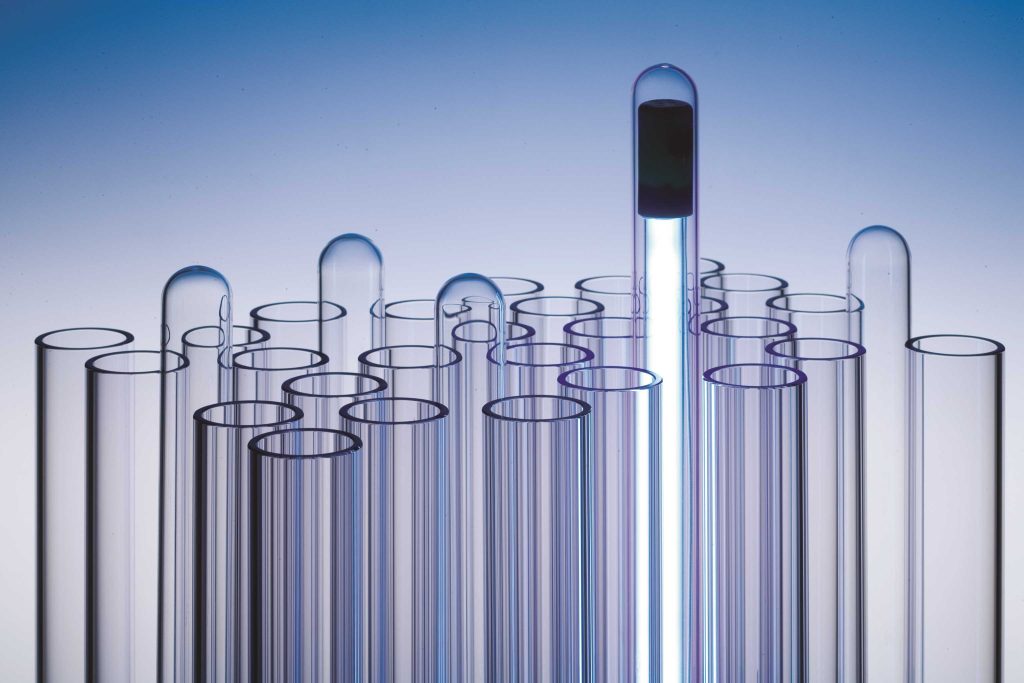Six process paths for high-purity quartz glass

Quartz glass has high purity, high spectral transmittance, low thermal expansion coefficient, and excellent resistance to thermal shock, corrosion, and deep ultraviolet radiation. It is widely used in high-end industrial manufacturing fields such as optics, aerospace, and semiconductors.
Quartz glass can be classified according to the preparation process. There are two main types of raw materials for preparing quartz glass. The first type is high-purity quartz sand, which is used for electric melting and gas refining to prepare fused quartz glass at high temperatures exceeding 1800°C; the second type is silicon-containing compounds, which are used to prepare synthetic quartz glass through chemical reactions.
Electric melting method
The electric melting method is to melt the powdered quartz raw material in the crucible by electric heating, and then form quartz glass through a vitrification process of rapid cooling. The main heating methods include resistance, arc and medium frequency induction.
Gas refining method
Industrially, gas refining method is slightly later than electric melting method. It uses hydrogen-oxygen flame to melt natural quartz, and then gradually accumulates it on the quartz glass target surface. The fused quartz glass produced by gas refining method is mainly used for electric light sources, semiconductor industry, spherical xenon lamps, etc. In the early days, large-caliber transparent quartz glass tubes and crucibles were directly melted with high-purity quartz sand on special equipment using hydrogen-oxygen flame. Now gas refining method is commonly used to prepare quartz ingots, and then the quartz ingots are cold or hot processed to make the required quartz glass products.
CVD method
The principle of CVD method is to heat volatile liquid SiCl4 to make it gaseous, and then let the gaseous SiCl4 enter the hydrogen-oxygen flame formed by the combustion of hydrogen and oxygen under the drive of carrier gas (O2), react with water vapor at high temperature to form amorphous particles, deposit on the rotating deposition substrate, and then melt at high temperature to form quartz glass.
PCVD method
The PCVD process was first proposed by Corning in the 1960s. It uses plasma to replace hydrogen-oxygen flame as the heat source for preparing quartz glass. The temperature of the plasma flame used in the PCVD process is much higher than that of ordinary flames. Its core temperature can be as high as 15000K, and the average temperature is 4000~5000K. The working gas can be appropriately selected according to the specific process requirements.
Two-step CVD method
The traditional CVD method is also called the one-step method or direct method. Since water vapor is involved in the reaction, the hydroxyl content in the quartz glass prepared by the one-step CVD method is generally high and difficult to control. In order to overcome this shortcoming, engineers improved the one-step CVD method and developed the two-step CVD method, also called the indirect synthesis method.
Thermal Modification
The thermal modification method first softens the quartz glass base material by heating it, and then obtains the desired product through methods such as trough sinking and drawing. In the thermal modification furnace, the furnace body is heated by electromagnetic induction heating. The alternating current passed through the induction coil in the furnace generates an alternating electromagnetic field in space, and the electromagnetic field acts on the heating element to generate current and heat. As the temperature rises, the quartz glass base material softens, and at this time, a quartz glass rod/tube can be formed by pulling down with a tractor. By adjusting the temperature in the furnace and the pulling speed, quartz glass rods/tubes of different diameters can be drawn. The coil arrangement and furnace structure of the electromagnetic induction heating furnace have a great influence on the temperature field in the furnace. In actual production, the temperature field in the furnace needs to be strictly controlled to ensure the quality of quartz glass products.
